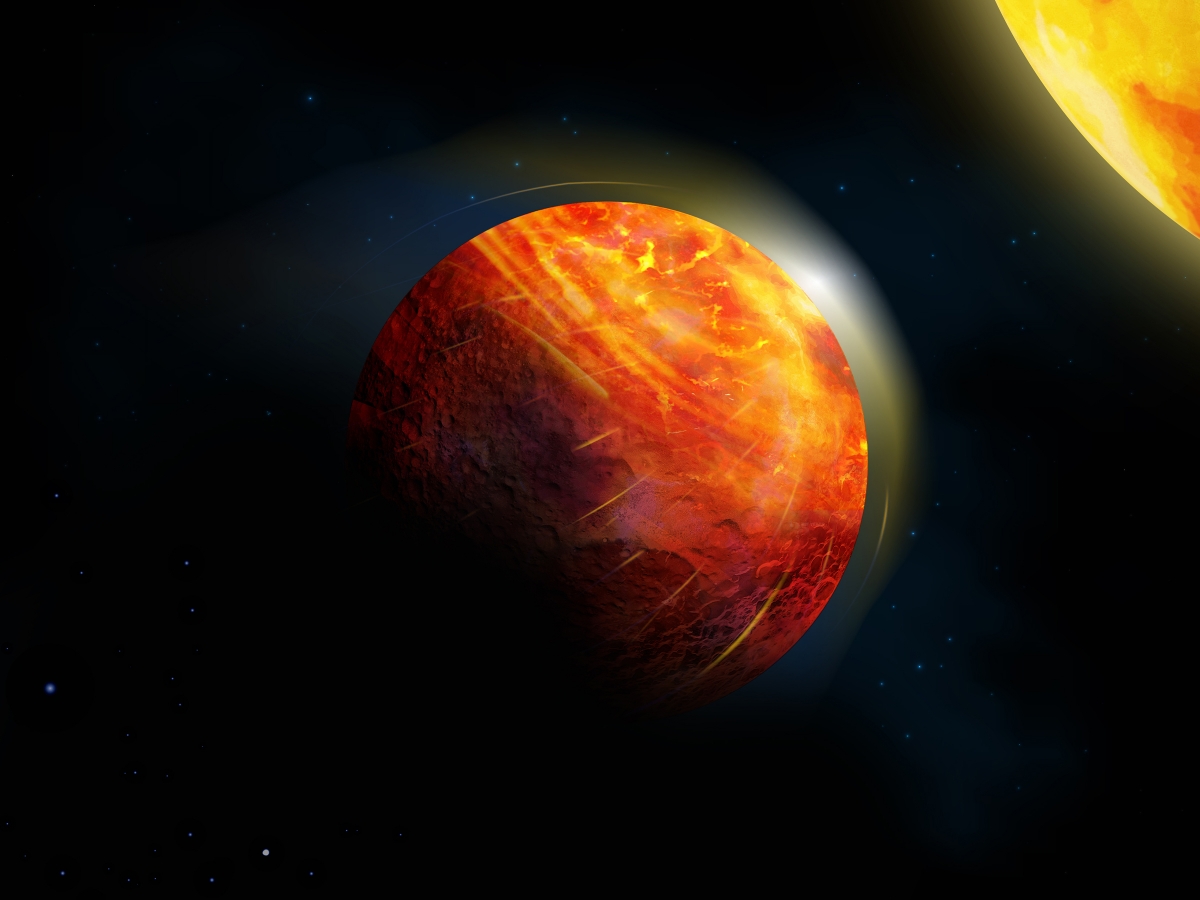Where it rains rocks into magma oceans
Not all rocky worlds resemble the Earth or Mars. If a rocky planet has the bad luck to circle too closely around its star, it becomes an extreme world. Such as the planet K2-141b, which is about 200 light years away from Earth, takes just under 7 hours to orbit around its star K2-141 and orbits only about 1 million kilometers away from it (Earth-Sun: 150 million kilometers). In a study published in the Monthly Notices of the Royal Astronomical Society, scientists from McGill University, York University and the Indian Institute of Science Education have analyzed what the weather cycle of this planet could look like. Evaporation and precipitation of rocks, supersonic winds that rage at over 5000 km/h and a magma ocean at a depth of 100 kilometers are among their conclusions.
“The study is the first to make predictions about weather conditions on K2-141b that can be detected from hundreds of light-years away with next-generation telescopes like the James Webb Space Telescope,” says lead author Giang Nguyen, a PhD student at York University. While analyzing the exoplanet’s illumination pattern, the team discovered that about two-thirds of K2-141b is exposed to constant daylight – more than the hemisphere illuminated by the Sun as we are used to on Earth.
On the (smaller) night side, cold temperatures of below -200 °C prevail. On the day side of the exoplanet, on the other hand, at an estimated 3000 °C, the temperature is hot enough not only to melt but also to evaporate rock, which eventually creates a thin atmosphere in some areas. “Our findings probably mean that the atmosphere extends a little beyond the coast of the magma ocean, making it easier to detect with space telescopes,” says Nicolas Cowan, professor in the Department of Earth & Planetary Sciences at McGill University.
It is remarkable that the atmosphere of rock vapors created by the extreme heat is also permeated by precipitation. Just as the water cycle on Earth, in which water evaporates, rises into the atmosphere, condenses and falls back as rain, the same applies to K2-141b for sodium, silicon monoxide and silicon dioxide. On Earth, the rain flows back into the oceans, where it evaporates again and the water cycle repeats itself. On K2-141b, the mineral vapor formed by evaporated rock is swept by supersonic winds onto the cold night side, and the rock “rains” back into a magma ocean. The resulting currents flow back to the hot day side of the exoplanet, where the rock evaporates again.
Nevertheless, the cycle on K2-141b is not as stable as the one on Earth, the scientists say. The backflow of the magma ocean to the day side is slow, so they predict that the mineral composition will change over time – which will eventually change the surface and atmosphere of K2-141b itself. “All rocky planets, including Earth, began as molten worlds, but then quickly cooled and solidified. The lava planets give us a rare insight into this stage of planetary development,” says Professor Cowan of the Department of Earth and Planetary Sciences.
